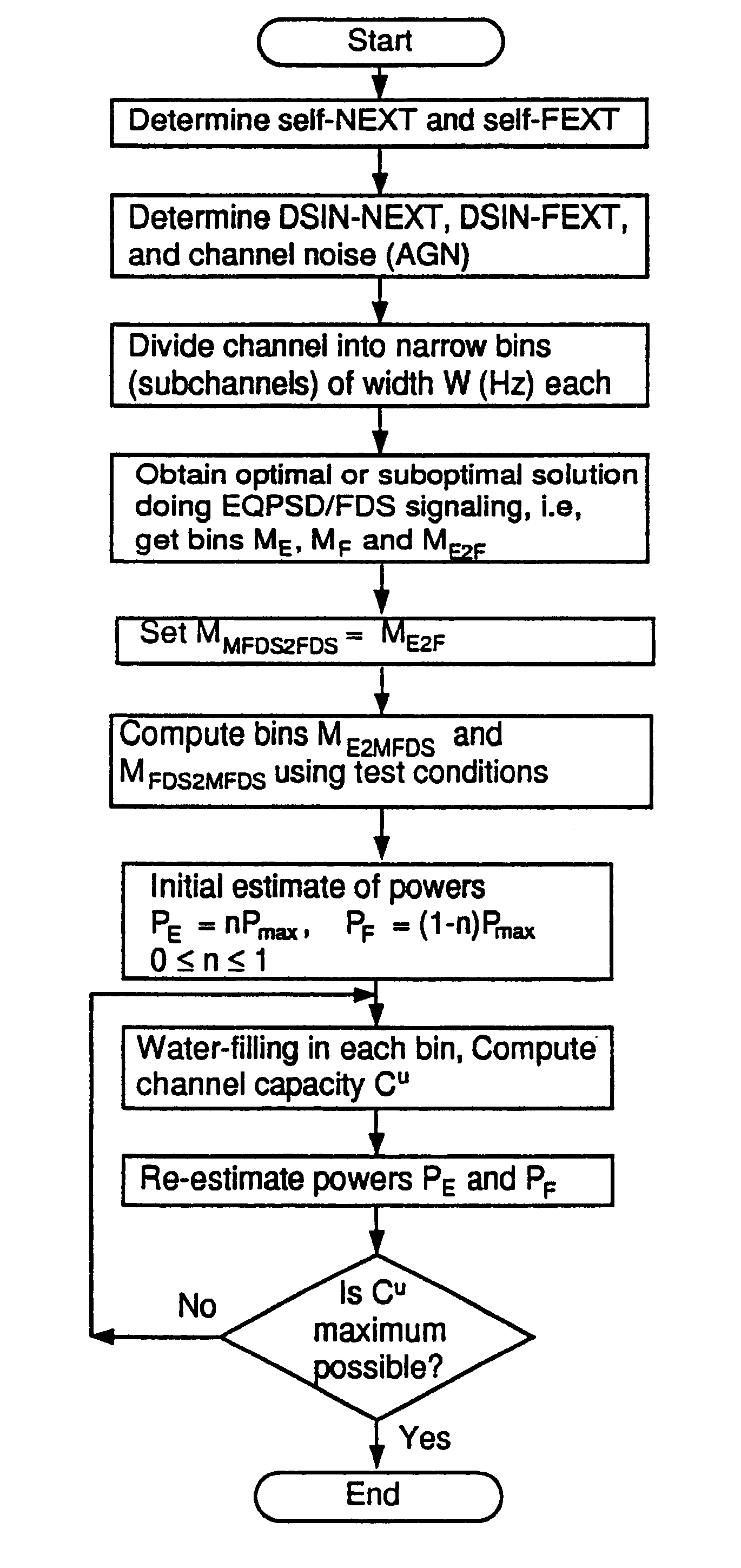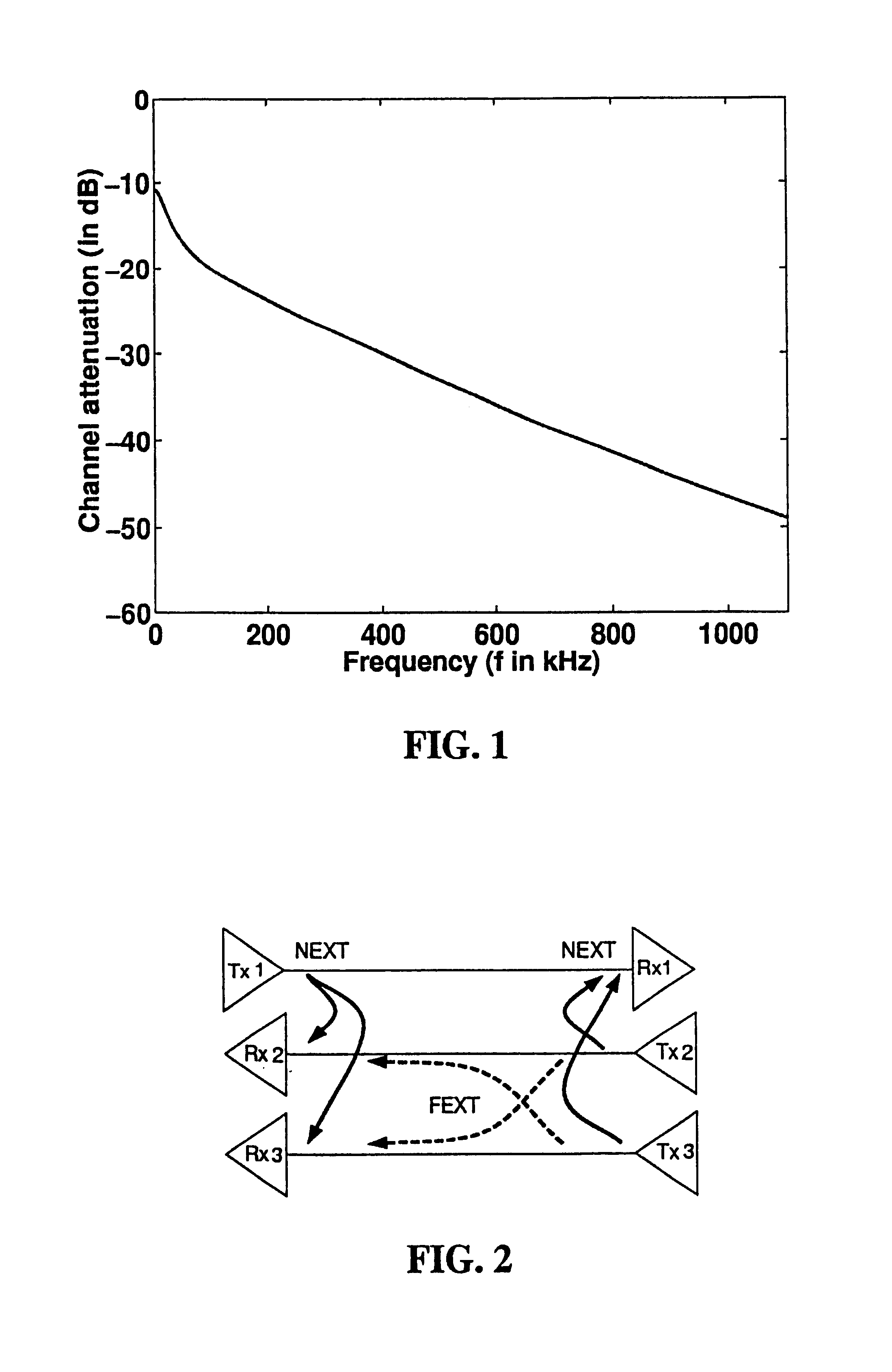Spectral optimization for communication under a peak frequency-domain power constraint
a power constraint and spectral optimization technology, applied in the field of electronic communication, can solve problems such as spectral compatibility, reducing the capacity of the hdsl2 service, and a large amount of crosstalk interferen
- Summary
- Abstract
- Description
- Claims
- Application Information
AI Technical Summary
Benefits of technology
Problems solved by technology
Method used
Image
Examples
case 2
and in Case 2 as c1u(Case 2)=W2ln 2{ln[1+S2Y+Z+N]+ln[1+SZ+N]}.(36)
Compute the capacity differences in the two cases as D=c1u(Case 2)-c1u(Case 1)=W2ln 2ln[(1+S2Y+Z+N)(1+SZ+N)(1+SY+Z+N)2].(37)
Taking the partial derivative of D with respect to Y we get ∂D∂Y=Wln 2S[1(Y+Z+N)(Y+Z+N+S)-1(2Y+Z+N)(2Y+Z+N+S)].
Let
U=Y+Z+N,
V=Y+Z+N+S.
Note that U, V≧0 and that we can rewrite the partial derivative of D with respect to Y as ∂D∂Y=Wln 2S[1UV-1(U+Y)(V+Y)]=Wln 2S[Y2+(U+V)YUV(U+Y)(V+Y)]≥0.(38)
Further, ∂D∂YY=0=0.
The slope of D with respect to Y is always positive and hence, c1u(Case 2)−c1u(Case 1) is always increasing with Y, which implies that
c1u(Case 2)−c1u(Case 1) ∀Y≧0.
When Y<0, i.e., when FEXT is higher than NEXT in a bin (F>X), we can redefine Y and Z as
Z=2aX, and, Y=a(F−X).
We can then follow the same analysis and show that the capacity c1u(Case 2) is greater than c1u(Case 1).
Thus, we have proven that FDS scheme rather than CDS scheme for interfering l...
PUM
 Login to View More
Login to View More Abstract
Description
Claims
Application Information
 Login to View More
Login to View More - R&D
- Intellectual Property
- Life Sciences
- Materials
- Tech Scout
- Unparalleled Data Quality
- Higher Quality Content
- 60% Fewer Hallucinations
Browse by: Latest US Patents, China's latest patents, Technical Efficacy Thesaurus, Application Domain, Technology Topic, Popular Technical Reports.
© 2025 PatSnap. All rights reserved.Legal|Privacy policy|Modern Slavery Act Transparency Statement|Sitemap|About US| Contact US: help@patsnap.com



